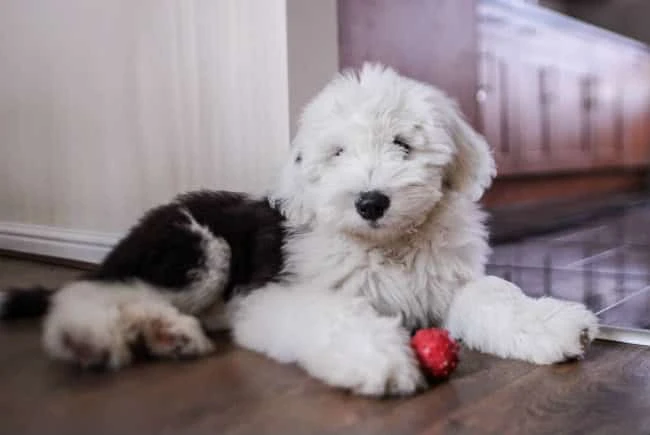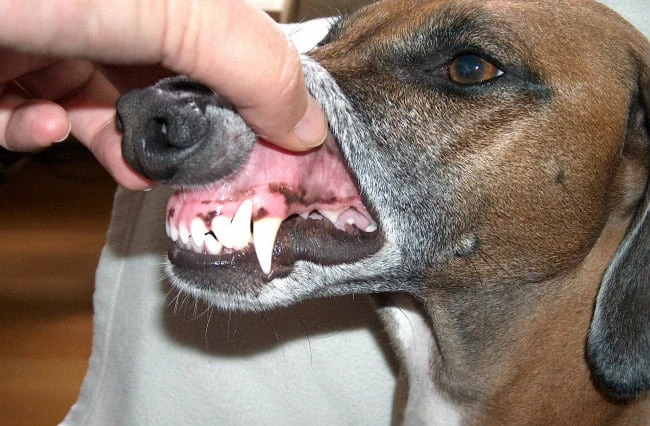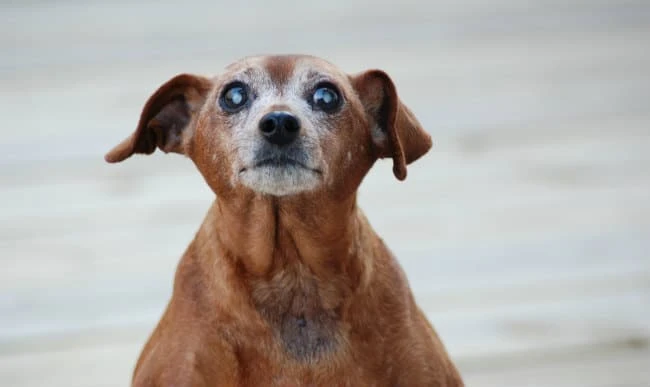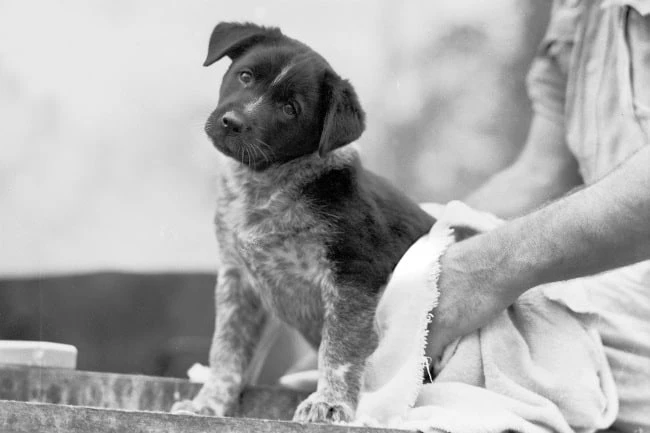The Dog Owners Guide To Grooming Your Dog Or Puppy
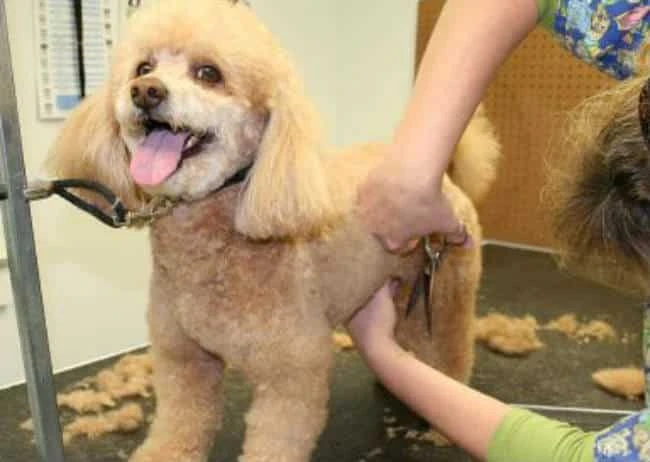
If you start grooming your dog from an early age (ideally from a puppy) this will get your pooch used to being bathed and washed etc and will make sure that he or she is on their best behavior. In fact it is not that uncommon for a dog to actually enjoy being groomed (I mean why not? Humans love being massaged so why would your pooch be any different)! Of course you need to be gentle. If you start pulling the brush through the tangles or matted hair this will only cause pain and upset.
It is important to mention that grooming your dog or puppy is not just about brushing the hair as it should involve you checking the skin for any signs of infection, allergies, fleas, parasites or growths etc. You should also clean the eyes, ears and make sure that the nails are trimmed (if you don’t feel confident then you should speak to a professional dog groomer). You should start by keeping the grooming sessions relatively short and slowly build up the time.
Brushing your dog’s coat regularly is not only a great way for the owner and their dog to bond it also helps to stimulate the blood circulation and promotes new hair growth. The amount you groom your dog depends on the breed and coat. For example breeds that tend to shed heavily include Labrador Retrievers, Dalmatians, German Shepherds and Pugs – and the hair will probably fill the brush pretty quickly (but better on the brush than on the furniture)!
Short haired breeds do not need to be groomed quite so often (a weekly brush should be more than enough). Below is a guide to grooming shorthaired, longhaired and wire-haired breeds.
Grooming a shorthaired dog
One of the best brushes that professional dog groomers recommend to groom shorthaired breeds is the ‘hound mit’ or ‘curry brush/comb’. The brush has knobbly bristles on and may have a strap that fits around the hand or act as a glove. You should also use a metal comb as this will help de-tangle any matted hair. You should stroke and brush the hair in the same direction making sure that the brush has contact with the skin so that dirt, loose hair and dead skin cells are collected. If your dog is a heavy shedder then you should brush your dog while he or she is on a blanket. This will enable you to simply pick up the blanket with the dirt, hair and dead skin cells inside and put it straight in the wash.
Another very useful tool for heavy shedders is the shedding blade, wire slicker brush or shedding comb as these tools will remove any excess coat. Either of these grooming tools should be moved over the dog’s body in the same direction as the hair naturally lies (after the dog has been brushed with the curry brush). When the shedding blade, slicker brush or shedding comb are used they should be used very carefully as the metal edges could injure the dog’s skin. When grooming your dog with these utensils only do it occasionally as they have a habit of removing too much of the coat if used too frequently and can leave the skin dry, flaky and scaly.
Grooming A Longhaired Dog
When brushing longhaired breeds you should pay close attention to tangles and mats (as longhaired breeds have a tendency to become matted and tangled). Tools for grooming your longhaired dog should include a pin brush, a wire slicker brush, shedding comb, shedding blade and a bristle brush. The pin brush has long metal pins that protrude out of the pad – this utensil helps to lift out any loose hair and removes skin debris. After you have brushed your dog you can use the pin brush to groom the dog in the opposite direction that the hair lies – this will help fluff the coat.
By also using the shedding comb or a dematting comb this will break up tangles and allow the matted hair to be broken up so that it can be brushed through. The slicker brush can also be used to remove any of the dog’s knots or tangled hair. After this has been completed the dog can then be groomed and brushed with the bristle brush as this will bring out the gloss and shine in the coat.
Grooming A Wire-Haired Dog
This should be done on a weekly basis and alongside the brushes and combs the owner should also use trimming, thinning scissors, a stripping knife and possibly a set of clippers. You should start the grooming process by using the bristle brush and pin brush and brush the coat in the opposite direction that it lays – then the owner should brush the coat following the direction that the hair naturally lays.
Wirehaired coats need to be stripped twice a year so that the hair keeps its hard texture. Stripping the hair simply involves removing the dead hair and shaping the coat. If you are unsure what type of stripping knives to use then you should speak with a professional dog groomer. Of course you can opt to have your dog clipped but this will remove the hairs texture (show wirehaired dogs are never clipped for this reason).
Wirehaired breeds also need to have their beard, eyebrows and facial hair trimmed. This should start with some grooming chalk being used to wash the areas. The hair should then be brushed in the direction towards the scissors or clippers so that the hair can be trimmed.
Grooming Your Dog – How Does Hair Grow & Shed?
A dog’s hair actually grows in cycles (in stages). The first stage is where the hair grows at it’s fastest rate (this is called the anagen stage). The next stage in the cycle is where the hair growth starts to slow down. The next stage in the growth cycle is known as the resting phase (or catagen phase), this is when the older more mature hair stays in the follicles where they will eventually detach from the base. The final stage in the growth cycle is where the new hair will push out the more mature hair leading to the hair falling out (shedding). This stage is known as the telogen phase and will lead to the whole cycle being repeated.
Properly Bathing Your Dog
It is very important when bathing your dog that you are organized as this will stop the dog from getting you or the floor soaked in water. You will probably need at least three towels, a cloth for the face, some cotton balls for the ears and some mineral oil that can be placed around the eyes to protect any soapy water from getting in the eyes. Of course you will also need some shampoo, a rubber mat to stop slipping and a hair dryer. Now start by brushing your dog using the techniques previously described making sure that there are no tangles or matted hair (this will only become worst when the hair gets wet).
Now you should take your dog to the bathing area where you should start running some warm water (starting at the head and showering the body from the top to the bottom). Now rub the shampoo making sure that the whole of the body is covered. Now rinse the shampoo out (if you leave it in this will cause more problems). You should then use some conditioner rubbing it in and then rinsing thoroughly. Now start drying your dog using the towels and hair dryer. Hold the hair dryer a few inches away from the body (you don’t want to burn the skin) and use the appropriate brush or comb to brush the hair as the dog is being dried.
How To Get Rid Of Matted Hair On Your Dog
When grooming your dog if your dog has clumps of matted hair (these can develop anywhere on the body) you should start by completely saturating the clumps of matted hair with a recommended coat conditioner as this will loosen the hair (leave it in for a few minutes). After a few minutes you should start trying to separate the hair with your fingers – once you have de-tangled the worst of the matted clumps you can then use scissors, clippers or a mat splitter to get rid of the worst of the clumps of matted hair.
Below is a list of recommended grooming utensils that might be useful when grooming your dog…
Scissors are probably one of the most important and useful utensils that are used by professional dog groomers. Scissors can be used to cut the main coat or trim around the feet, eyes, ears and the tail. It is important that the scissors do not have a shape point (a rounded end is best). You may also find thinning shears useful (these just thin out the hair rather than cut out large amounts – great for thinning the beard).
Mat splitter – Not surprisingly these are used for breaking up clumps of matted hair. Mat splitters can have multiple blades or single blades depending on the type and make. Great when grooming your dog is she has matted hair.
Pin brush – These are excellent for longhaired breeds. The pins protrude from a pad and are great for removing loose hair and dead skin.
Bristle brush – This type of brush has natural bristles and can be used on all types of breeds. A great tool for removing loose hair and dirt.
Slicker brush – This is used in short strokes to remove loose hair (not the best brush for shorthaired dogs). The brush has bent wired teeth that protrude from a rectangular base.
Hound brush (glove) – This is placed over the hand that is used in a wiping motion (great for shorthaired breeds). This brush will help remove dead hair and polishes the coat. The hound brush also has small knobbly protrusions sticking out from the brush.
Comb – This is another must have tool when grooming your dog or puppy. The teeth are smooth, rounded and evenly spaced – great for lifting any of the dog’s hair ready to be trimmed and cut. With some metal combs either side has differently spaced teeth (one side spaced wider than the other).
Rake – Another great tool for grooming your dog and removing dead or loose hair.
Table Of course a grooming table will always make grooming your dog or puppy that much easier. You want the surface to be non-slip. Don’t set the height to high as you don’t want your dog to injure himself if he jumps off and you don’t want it too low so you have to keep bending over.
Clippers – Electric clippers are excellent for trimming or shaving a heavily matted area. You can purchase different blades for different types of coats.
Nail file – This should be used after the nails have been cut – they are used to file down any edges.
Nail clipper – This tool is used like a guillotine (it can have single or multiple blades).
Nail grinder – This tool is also known as a Dremmel tool which can be used to grind down a dog’s nails to the right length.
Towel – A towel is great for drying wet dogs. But a damp towel is also great for grooming your dog if it has no hair. A damp towel rubbed across the coat can also be great for grooming shorthaired breeds as it removes dead and loose hair. It can also be great at loosening tangles and matted hair.
Grooming your dog – cleaning your dog’s ears… It is worth mentioning that ear problems are one of the most common health problems to affect dogs. Owners do not need to constantly clean their dog’s ears as a small amount of brown wax inside the ear is perfectly normal and should be expected. However, when grooming your dog you should always aim to wash and clean the inside of the ear flap as this is a common place for dirt, wax and debris to accumulate.
You should start by visiting a local pet store and purchase some mineral oil and some cotton wool. You can also use ear cleaning products specifically made for cleaning a dog’s ears (one of the best is Oti-Clens). Start by applying the ear solution (whichever you have purchased) to the cotton wool and slowly wash the inside of the ear flap until it is clear of oil, debris and any dirt. You should never use alcohol on the ear and if you suspect that your dog has an ear infection (the ear might be red or inflamed) you should take your dog to the vet. You should never attempt to clean the ear canals as this is something that only a vet should do.
Trimming Your Dog’s Nails
trimming your dog’s nails is an important part of the grooming process. Of course most dogs will not always need to have their nails trimmed regularly as they will be naturally worn down through general activity. If the nails do get too long they can not only cause problems by hitting the ground first (before the foot pad) but they can also rip the carpet, furniture and injure the owner if the dog jumps up. By trimming your dog’s nails regularly the ‘Quick’ (this is the area at the base of the nail where the blood vessels and nerves reside) will naturally start to recede which will keep the nails much shorter on a permanent basis.
Of course if your dog has dew claws then these do need to be trimmed regularly. The dew claws are what is left of the fifth toe – however if the dew claw is left to grow it can start to grow in on themselves which can lead to them damaging the skin.
When trimming your dog’s nails you should start by lifting your dog’s paw so that the claw becomes extended. Try and determine where the quick is (you can see this as it is normally pink and will stop before the nail becomes whiter). Hold the nail trimmer parallel to the paw so that if you held a straight edge from the paw pads along the nail trimmer there would be contact from the pads and the nail clipper. A guillotine cutter is the best tool for this job and should cut the nails slicing upwards from the underside of the dog’s nails. If you do accidentally do cut through the quick then the dog will probably yelp and have a short period of pain and the nails will bleed for a short period before clotting.
Additional Info For Grooming Your Dog
- Learn how to brush your dog’s teeth.
- Learn how to empty your dog’s anal glands.
- Learn all about common dog skin disorders.
We hope you have found our guide to grooming your dog or puppy useful.
Dog Health Problems Online > A Guide To Addisons Disease
